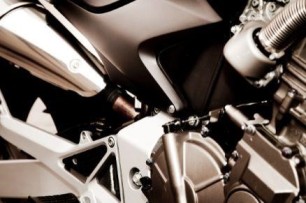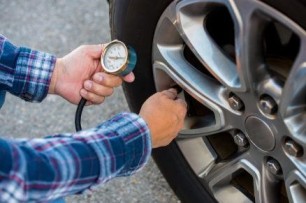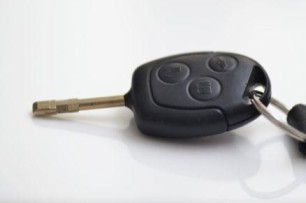General Insurance Blogs, Articles & Updates by - Magma HDI
Have us call you
- RENEW YOUR POLICY
- BUY NEW POLICY

Here is a list of five things that elders must take care of before planning a road trip
The passion for exploring does not fade with age. Many seniors start planning their post-retirement plans from an early stage. And, travel is one of the most exciting adventures they wish to do in their old age. After years of providing for their families, they deserve a break to live for themselves. The elderlies should experience the world’s magnificence at their own pace and spend some time enjoying the serenity of nature to rejuvenate their soul.
However, elderly adults should take particular measures before travelling. If you intend to travel with more aged folks or hook them up with a senior road trip group, here are some factors to consider for their security and wellbeing.
1. Health restrictions and physical evaluation:
You can never take too much precaution when it comes to health. It is critical to keep medications available, therefore, ensure they are conveniently accessible. Carry all prescribed medications with you. It is also a brilliant idea to supply over-the-counter medications on hand for various potential requirements.
2. Keep the trips short:
While creating an itinerary, plan the travelling and sightseeing accordingly. Avoid ending up bone-tired journeys. Instead, take frequent breaks while driving so they don’t feel tired. Choose destinations that don’t involve much walking and are ideal for aged people to explore. It is advisable to take frequent halts for the seniors to stretch their bodies and feel refreshed and energetic again.
3. Road conditions:
It is prudent to be aware of road conditions. Damaged roads can be a problem for people who are not used to travelling regularly. Also, keep in mind that older people’s bodies are vulnerable due to low bone density and cannot handle jerks like youngsters. Therefore, maintain a steady speed and avoid rushing.
4. Do not forget to pack the necessities:
You must bring a few basics with you: Warm clothes and any medical equipment such as asthma inhalers, wheelchairs, shawls, and so on. A cushion or blanket will also come in handy. Eating locally accessible food may not be the smartest choice in certain situations. As a result, bringing some of their favourite foods is preferable. But ensure that the food must be less spicy, less oily, easily chewable, and easy to digest.
5. Bring fewer belongings:
When going on a road trip, you want to concentrate on the journey, the magnificence of nature, and the locations you see. Taking valuables will add to your anxiety and reduce the pleasure of the vacation. It also presents unsafe conditions. And anyway, seniors who travel by car should be stress-free!
Follow the above tips carefully to ensure a comfortable trip for the elders. Checking on health and safety is paramount when travelling with aged people. To lean a little more towards the safer side, you must have insurance before planning the road trip. You are also required to invest in motor insurance as it is mandatory for anyone travelling via cars. So, before you start your trip, look for a motor insurance company in India and get your insurance covered. Remember to carry all the required documents with you throughout the journey.
To visit the best motor insurance company in India, click HERE .
Disclaimer: The information provided above is for illustrative purposes only. To get more details, please refer to policy wordings and prospectus before purchasing a policy.

Here is the special diet to keep you fit this monsoon
India is a country of diversity. Be its languages, cultures, traditions, customs, food, beverages, clothes, etc., the country provides you with a wide range of flavours linking back to the history and development of the region over time. The food palette in our country changes every hundred kilometres. And adding to the list are seasons. For every season, there are particular dos and don’ts regarding food.
The onset of the monsoon season creates a soothing vibe. The luring downpour, clouds, gentle winds, and food make the monsoon a season of endless cheerful moments. Cravings for fritters and tea are synonymous with monsoons. While oily and fried food gets our taste buds, it is also essential to be mindful about what you eat, especially during the monsoons.
This blog will discuss the dietary restrictions you must maintain to ensure you don’t fall sick. Here is the special diet to keep you fit this monsoon.
1. Oily food is a strict no:
While we all enjoy pakoras with tea in the lovely monsoon drizzles, it is not suitable for your heart and digestive system. Consuming too much oil can make it difficult for your digestive system to break down into energy-providing carbohydrates.
The excess fat can eventually be deposited in your body and, over time, cause pressure on your nerves which helps in circulating the blood. This makes it difficult for your heart to supply blood to the whole body. It can lead to severe health and heart risks.
2. Say no to spicy food:
Just like oily food, spicy food is not very gut-friendly either. It can cause indigestion due to excessive spice consumption and lead to problems like acidity, stomach ache, burns, diarrhoea, etc. Spicy food can severely impact your metabolism, slowing down the stomach’s ability to absorb all the nutrients from the food you eat.
3. Confused about leafy vegetables:
Doctors, nutritionists, and dieticians spend their entire lifetime advising their patients and clients to consume leafy greens. But you should avoid them during the monsoons. Why? The leaf moisture can cause it to go wrong, and the humidity makes germ infestation much more convenient and accessible.
If consumed in such a state, it can have severe health consequences. Apart from this, all the pesticides and insecticides might also cause some trouble due to the rain. So, to sum up, avoid eating leafy greens in the rainy season. If you still wish to consume them, ensure to wash and boil them thoroughly before cooking.
4. Be watchful about water:
If you or someone in your family consume water directly from the tap or the borewell, STOP. It would be best if you were careful about the water you drink. And stay even more watchful during the rainy season as the water might get contaminated and become unfit for consumption.
Drinking contaminated water poses high chances of diarrhoea, stomach aches, typhoid, cholera, stomach infections, and much more. Install a proper and home-friendly water treatment plant to ensure that the water you and your loved ones consume is safe to drink.
Other dietary tips include consuming tons of fluids and tea with special spices and herbs to help with sweating and the enormous humidity levels, which can cause dehydration and loss of nutrients. Consume spices like cardamom, ginger, turmeric, and cinnamon to help boost your immunity levels and combat any health issues (for example, cold and flu). Eating freshly cooked foods is another way to ensure that your diet contains all the nutrition you need during the monsoons.
Follow these tips and keep a check on your health without falling sick or suffering from any health conditions. Younger individuals tend to recover quickly due to a high metabolism rate compared to the elderly. So, it would be wise for you to purchase the best health insurance in India for parents after browsing through all the available options in the market. Find the one which caters to your needs in the best ways. Keep your parents’ health a priority.
Click HERE to know more about the best health insurance in India for parents.
Disclaimer: The information provided above is for illustrative purposes only. To get more details, please refer to policy wordings and prospectus before purchasing a policy.

Here are a few useful ways you can adjust your bike's idling by yourself
If you’re seeing this, you probably are wondering about a phrase that both seasoned motorcyclists and motorcycle marketers have mentioned several times: idling. What precisely is idling, and how can you adjust it by yourself? Let’s understand this.
What is idling?
Idling occurs when your motorbike engine is on and working, but you are not moving forward. Idling may also be defined as pausing at a stoplight with the motorcycle still functioning but not going forward. When your motorbike is idling, it is the period between igniting it and riding it.
Let’s dig deep into all you should know about idling.
How can we change the idle speed of an engine?
We try turning an alteration to raise or reduce the engine idle speed on turbocharged automobiles. Bikes manufactured now do not have such a feature. The idle speed of an engine is a pre-programmed function. We cannot directly modify the motor idle speed on the latest bikes. If the motor idle speed has to be adjusted, please refer to your bike’s manual to understand the recommended RPM first. The recommended idle speed of a bike depends on the type of engine and air to fuel ratio.
Does your bike need idling?
The most common purpose for idling a motorcycle is to “heat up” the engine. It helps in maintaining the engine properly circulated with gasoline, resulting in smooth riding. This is particularly frequent during the winter and in generally chilly areas all year. The idle period also varies according to the age of the motorbike. Older motorcycles idle for minutes, while current bikes idle for just a few seconds.
Yet another reason you should idle your motorbikes is that it is not always practical to switch the motor on and off when they are caught in traffic or need to get off their bike for a brief time.
How to adjust your bike’s idle?
It’s relatively simple if you do it right. If you have an older carbureted motorbike or an early fuel-injected motorcycle design, just use the idle speed adjusting screw. Twist and turn the screw slowly clockwise to raise RPM and anticlockwise to reduce RPM. This should be done when the engine has reached the average operating temperature. You may stop the idling once you feel that the engine has reached the desired RPM.
To summarise, idling on a motorbike occurs when the motor is left operating; however, the bike is not in motion. Idling is helpful to generate more RPM and attain more thrust. The motorists who desire constant power, usually get idling done or improved for a better experience.
Last but not least, being a motor-savvy person doesn't qualify you with all the protection for your bike. Instead, having a robust two wheeler insurance plan can help you overcome financial risks getting to your pockets. Numerous insurance companies offer two wheeler insurance online in India. Choose a suitable one and invest in it to ensure optimum financial security at the time of emergencies.
To browse two wheeler insurance online India, click HERE .
Disclaimer: The information provided above is for illustrative purposes only. To get more details, please refer to policy wordings and prospectus before purchasing a policy.

Visit these top stargazing sites in India to spend memorable nights
Who hasn’t desired to spend a night beneath the stars? The beautiful sky appears to be a canvas painted with countless twinkling stars. Stargazing gains a special place in the bucket list of most travellers. And rightly so. Who wouldn’t want to see the starry night while enjoying a mesmerising atmosphere? If you are travelling with a group, a random jam session under the open starlit sky will melt your heart. It’s a sight to behold.
Where can you find such places with stars lined up? Don’t worry. We can help you plan your next trip to the sites that offer you this jaw-dropping experience. Let’s get started.
1. Rann of Kutch, Gujarat:
Rann of Kutch in Gujarat is one of the largest salt marshlands on Earth. It offers the best crisp and clear night sky views. It encapsulates almost six magnitudes of stars, easily visible to the naked eye. All in all, this place is heaven in India for all the astrophile and stargazers. The time from October to February is considered the best to visit these marshlands.
2. Pangong Tso Lake, Ladakh:
Ladakh is a dream destination for the majority of travellers. And now, the iconic Pangong Tso Lake is an even more compelling reason that adds a feather to the hat. It is regarded as one of the best stargazing views in the entire country.
The lake is situated at an elevation of 4,225 meters. The starry sky outlines enhance the mesmerising night view from this lake. Trekking opportunities are available where you can set up camps and experience the view of the gazillion stars. Visiting Pangong Tso Lake in Ladakh from May to September would be the wisest choice.
3. Coorg, Karnataka:
Coorg is one of the most beautiful hill stations one must visit while touring the state of Karnataka. The waterfalls, coffee gardens and the lush green views can calm your soul and give you the peace you crave in the hustle of city life.
Giving you glimpses of mountain peaks and starry sky outlines, Coorg offers the tourists and adventurers multiple opportunities to camp in the forests where the tall trees form beautiful canopies, and the stars shine through. And if you are solely visiting Coorg for stargazing, make sure you plan your trip from October to March.
4. Spiti valley, Himachal Pradesh:
Himachal Pradesh offers some of the most beautiful views and tourist locations in India. And the high altitude makes it a perfect spot for experiencing the serene night sky views and capturing the beauty of snow-capped peaks.
At an elevation of 4270 meters, Kibbar or Kyibar in Spiti valley is a well-known point in Himachal Pradesh, specifically for stargazing. The best time to visit Spiti Valley is in the winter.
Various other locations in India offer stargazing opportunities, such as Nubra Valley in Ladakh, Sonmarg in Jammu, and Kashmir, Kashid Beach in Maharashtra, Jaisalmer in Rajasthan, and Shaheed Dweep or Neil Island in Andaman and Nicobar Islands, etc.
We hope this list will help you plan your next trip-solo or with dear ones to the sites where stars bring energy into life. Spend memorable nights and gasp at the wonders space offers.
As you consider travelling, how about getting general insurance for your travel? You deserve some relaxing time where you do not have to worry about sudden, unprecedented circumstances that can ruin your trip. And now, explore your options and get the best online general insurance which would cover your travel insurance in the best ways possible.
Click HERE to know more about the benefits of online general insurance.
Disclaimer: The information provided above is for illustrative purposes only. To get more details, please refer to policy wordings and prospectus before purchasing a policy.

Here are a few tips for maintaining the optimum tyre pressure in two-wheelers
Tyres are the least talked about part of a bike and usually get tossed to the side. But it is crucial to check your two-wheeler’s tyres regularly because they go through a lot. Whether you are riding on a metal road or rough surfaces —they have to be able to hold their shape. But, quick-fix solutions like tyre pressure can do so much for your tyres.
Imagine riding your bike, and you realise there's a flat tyre. This can interrupt your ride due to the waste of time. Also, sudden faults in the tyres are potential risks to the rider's life and even damage the bike.
Tips for maintaining the optimum tyre pressure:
Taking care of your bike's tyres isn't a big task. If you remain a little attentive, it's possible to avoid any breakdown-related issues. However, a big problem that one needs to avoid is the accident and financial worries attached to it. To deal with these, consider buying insurance plans. Getting a 2 wheeler insurance policy is like buying a shield for your two-wheeler.
And luckily, there are four tips to help you avoid tyre-related accidents while riding your bike. Maintaining optimum tyre pressure is crucial to minimise mishaps on the road.
1. Are your tyres correctly positioned:
When checking your bike, you should always check the tyres to see if they are in the correct position. Also, check for any punctures as sharp objects such as glass can hamper the quality of tyres. Make sure to move the tyre forward and back to check the whole surface thoroughly.
2. Check the tyre pressure:
One of the best ways to protect your two-wheeler is to examine the air pressure. When inflating your tyres, you can extend their lifespan and improve handling. Make sure to check the air pressure before every ride. As the bike heats up, air pressure can change, and it is essential to keep track of the air pressure level for your bike.
3. Recommended air pressure:
Keeping your motorcycle's tyres at the recommended air pressure is essential. Ask the service centre or check your bike manual to know the recommended tyre pressure, and ensure you maintain it. Also, to avoid sliding on wet roads, make sure your tyres are in good shape. Check the treads for wear and make sure they are not bald. If there is a decrease in an inch or quarter bald track, you should consider replacing the tyres.
4. Avoid maximum inflation:
When filling your tyre with air, be mindful that the sidewall states the maximum pressure. The recommended amount is always lower than the maximum. Excessive air filling can cause considerable damage to the tyres and increase the probability of tyre burst, creating a life-threatening situation for the rider and fellow drivers around him.
With an increasing number of road accidents and fatalities in India, 2 wheeler owners must be well-protected from any unfortunate mishaps. So, make sure you get a 2 wheeler insurance plan, drive safely, and stress-free. Also, use the tips mentioned above to take the best care of your bike’s tyres and leave no scope for negligence.
Click HERE to buy the best 2 wheeler insurance.
Disclaimer: The information provided above is for illustrative purposes only. To get more details, please refer to policy wordings and prospectus before purchasing a policy.

Let's understand how a central locking system impacts a car's safety
Since its implementation, the central locking system has become one of the essential safety features in a car. It's a combination of electronic and mechanical components that only allow access to authorised individuals.
Earlier, central locking systems in automobiles used a compressed air mechanism with separate vacuum reservoirs that triggered the locks of all four doors when the key was inserted and turned in a lock. Today's systems use wireless or infrared control, which can activate the mechanism from a distance.
In today's post, we will look at the functioning of the central locking system and how it impacts a car's safety.
The four main components of a central locking system.
1. Actuator:
An actuator is an electric motor that controls the car's central locking system. This component is built into the door and consists of a combination of mechanical latches.
2. Transponder:
It is a system built into the key's bow that determines whether the correct key is being used. As the key approaches the ignition lock, the transponder code is read. When the correct code is scanned, the electronic immobiliser sends a signal to the engine to permit it.
3. Remote Controller:
Remote controllers are increasingly being used in all cars. They are designed to replace the function of the key systems completely. The remote control includes electronic circuitry that sends coded instructions via infrared rays to the receiver located inside the vehicle to permit a keyless entry.
4. Start and stop system:
Unlike traditional ways, which required a key to be inserted into the ignition lock to start the car, engines are now being started using keyless systems where a transmitter – also serving as the central locking controller – is scanned into a reader in the vehicle. Later, the engine is started by pressing a button.
Safety advantages of central locking systems:
• The driver has better control over all the doors. The central locking system allows drivers to lock or unlock all four doors by pressing a single button. This is very convenient since the driver doesn't have to worry about unlocked doors while the car is in motion.
• Since the code is digitally encrypted, it is tough to make duplicate keys.
• If your key is ever stolen, you can simply remove the access right from the software on your phone. It connects with the car's digital lock and terminates access rights. Some automobile manufacturers even allow removing the access remotely.
• In more sophisticated systems, the car's door automatically locks itself after reaching a specific speed limit. As a result, no one, especially toddlers, can open the door by mistake —this helps avoid serious accidents.
• In case of an accident, a central locking system smartly unlocks the door so that help can reach you without having to break anything.
What else assists post-car accidents? Comprehensive car insurance. You can claim all the expenses involved in repairing and servicing your car under your car insurance policy's scope
A central locking system is essential for a family vehicle in practical usage. The ease of access and security that it provides make life easier for all automobile owners. Having a central locking system in your car provides extra security and brings down your car insurance premium. All the reputed car insurance companies encourage car owners to adopt convenient and safe practices. So, go for a central locking system in your car to enjoy a wide array of benefits and deals that you shouldn't be missed out on.
Click HERE to buy car insurance in hassle-free steps.
Disclaimer: The information provided above is for illustrative purposes only. To get more details, please refer to policy wordings and prospectus before purchasing a policy.


